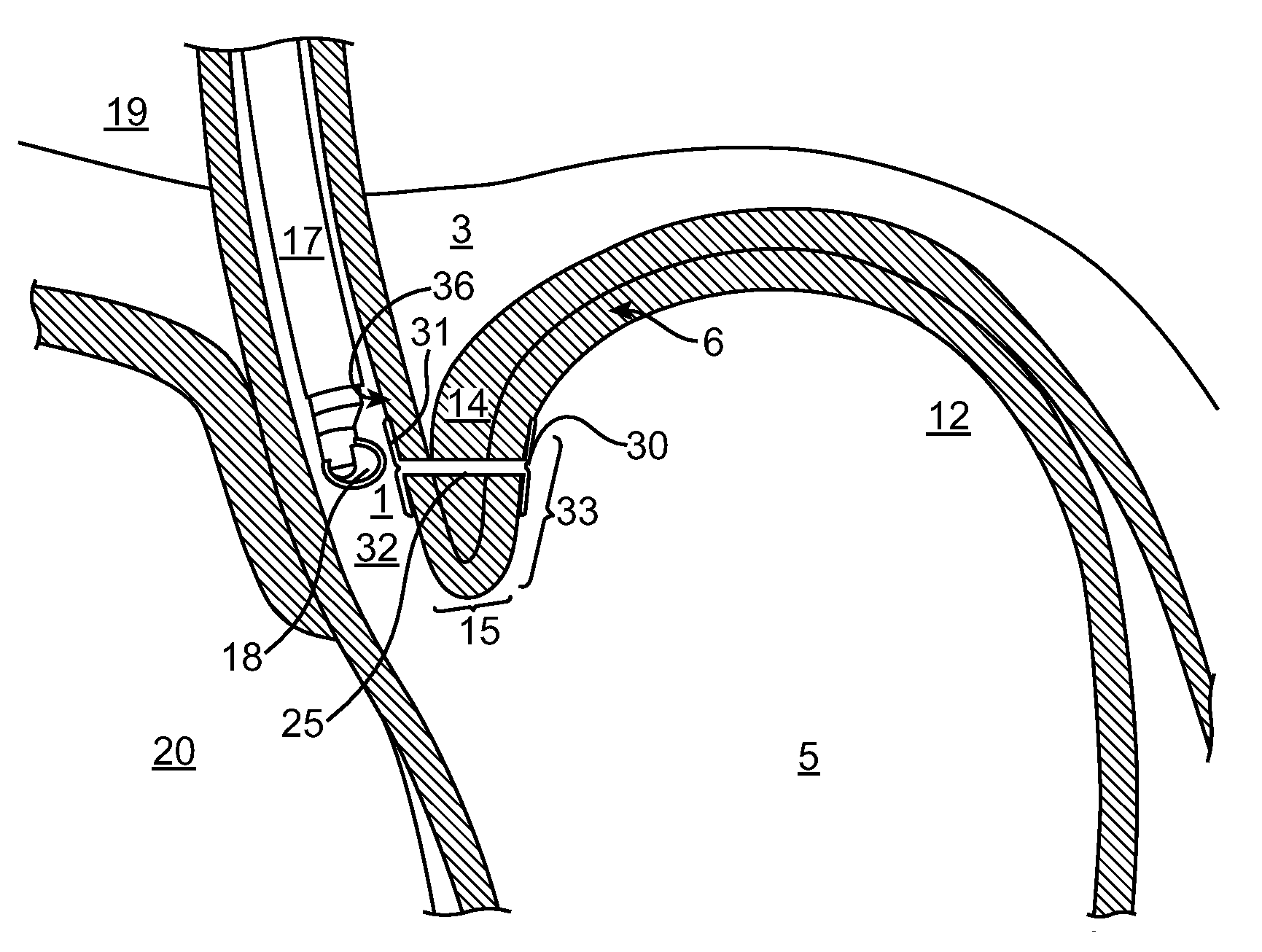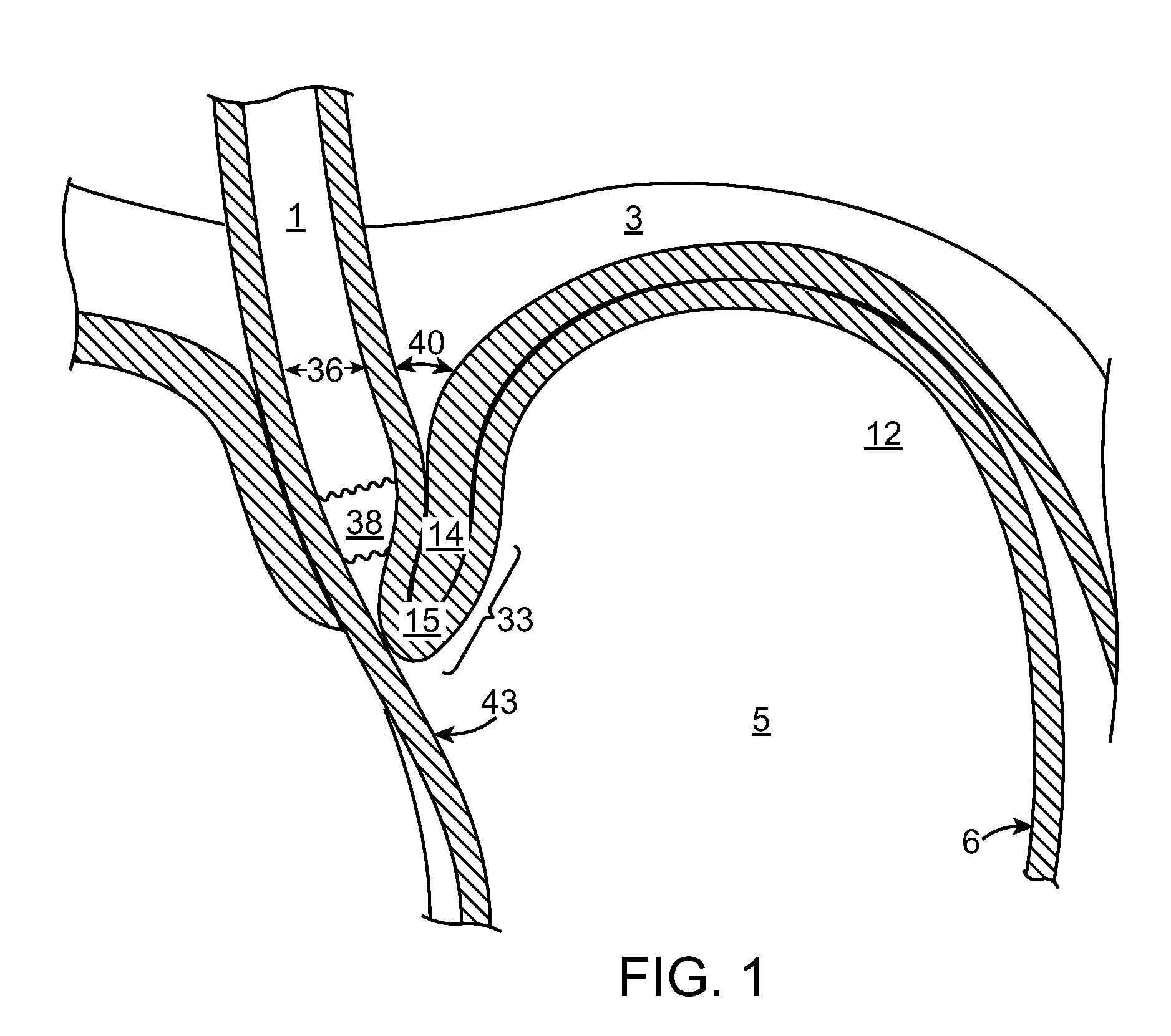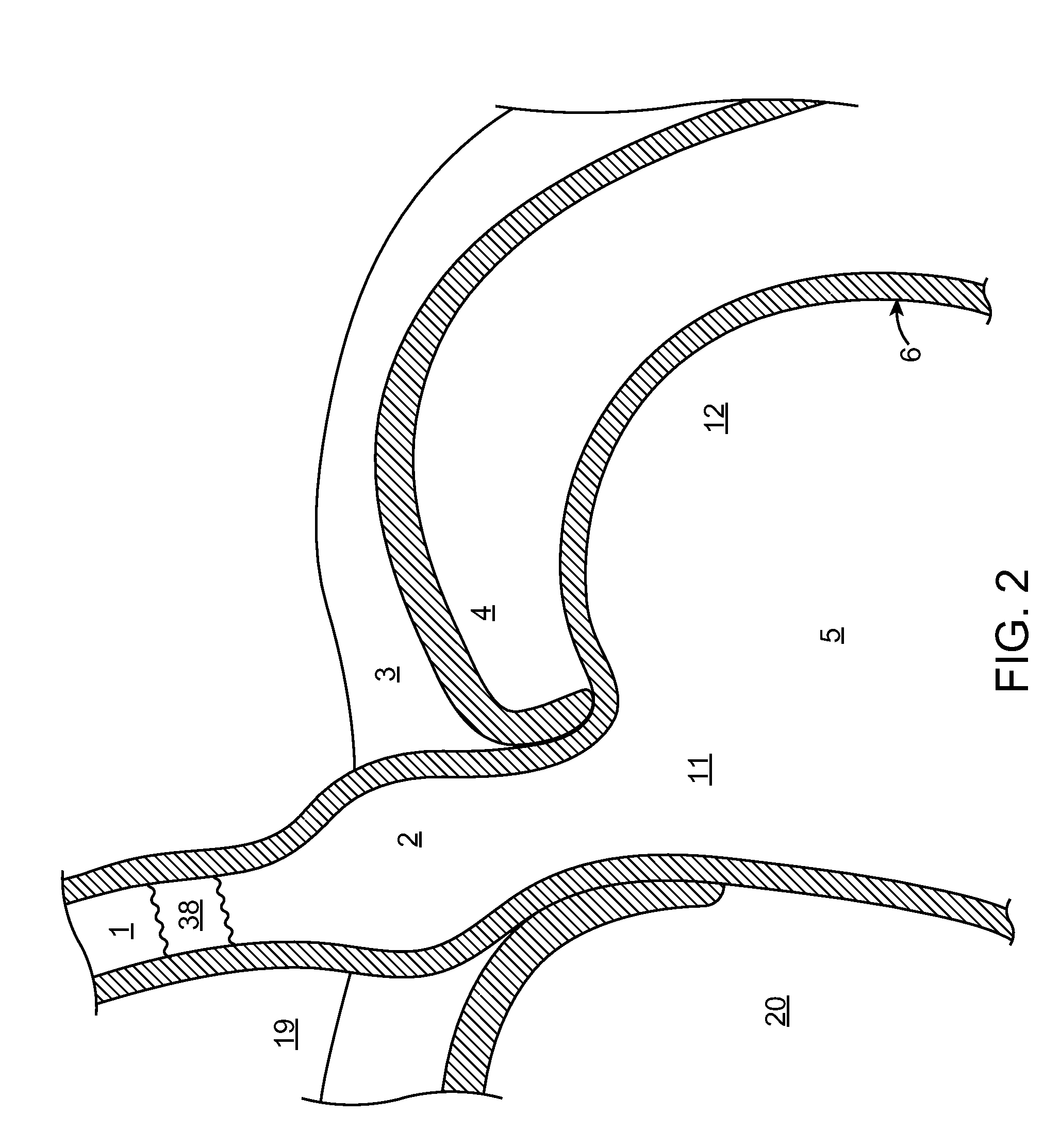Methods and Systems for Treating Hiatal Hernias
a technology of hiatal hernia and treatment methods, applied in the field of medical methods and equipment, can solve the problems of insufficient endoesophageal endoscopic visualization, inability to fix stomach and esophagus, etc., and achieve the effect of reducing the hernia
- Summary
- Abstract
- Description
- Claims
- Application Information
AI Technical Summary
Benefits of technology
Problems solved by technology
Method used
Image
Examples
Embodiment Construction
[0040]The medical methods and systems described herein offer improvements over the techniques currently utilized to perform endoscopic procedures to reduce hiatal hernias, restore the angle of His and to treat other conditions of the lower esophagus. The present invention relates to novel methods and systems that fix the distal esophagus and fundus directly to the diaphragmatic crus muscle. The present invention provides several embodiments where the crus is precisely identified followed by the placement of a translumenal anchor which connects, fastens and secures the esophagus and / or stomach to the diaphragmatic crus. This procedure reduces the hiatal hernia and restores the anatomy to its normal configuration.
[0041]FIG. 1 is a cross sectional view of the gastrointestinal tract in the area of the gastroesophageal junction (GEJ), from the esophagus 1 to the stomach 5 depicting a healthy anatomy, including a normal gastro-esophageal valve (GEV) 33 with correct angle of His 15 and cru...
PUM
 Login to View More
Login to View More Abstract
Description
Claims
Application Information
 Login to View More
Login to View More - R&D
- Intellectual Property
- Life Sciences
- Materials
- Tech Scout
- Unparalleled Data Quality
- Higher Quality Content
- 60% Fewer Hallucinations
Browse by: Latest US Patents, China's latest patents, Technical Efficacy Thesaurus, Application Domain, Technology Topic, Popular Technical Reports.
© 2025 PatSnap. All rights reserved.Legal|Privacy policy|Modern Slavery Act Transparency Statement|Sitemap|About US| Contact US: help@patsnap.com



